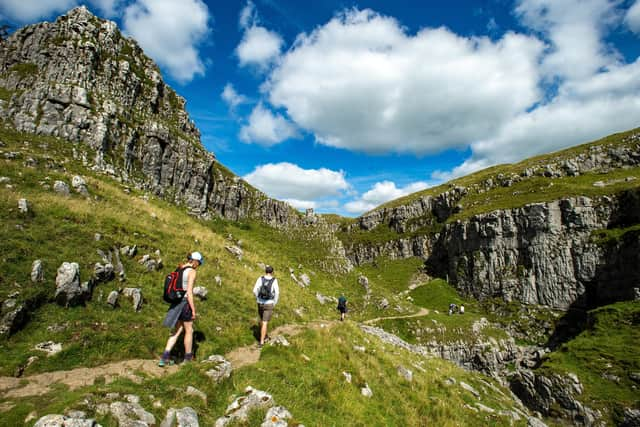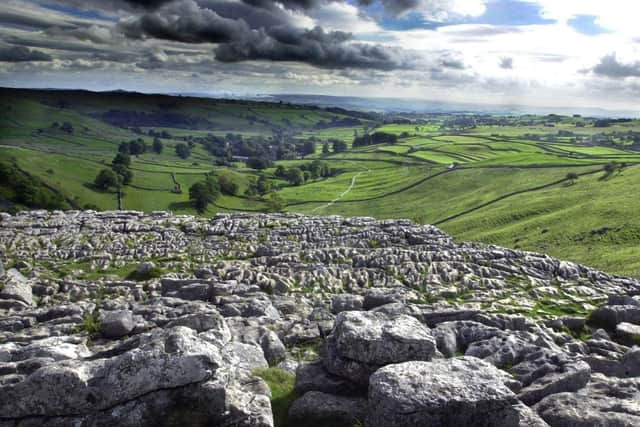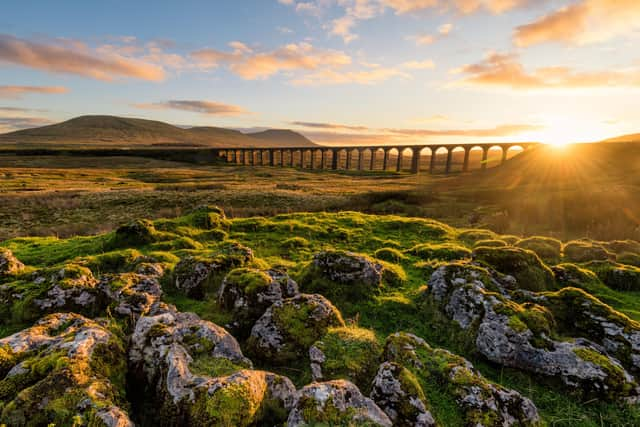Yorkshire and the role of environmental tourism – Susan Briggs
We’ve already seen how keen people are to travel as soon as they’re released from lockdown captivity. I think it is likely Yorkshire will see a tourism boom. The question is: do we want one?
I’ve spent three decades promoting tourism businesses and destinations. Until now the answer would always be ‘yes’. Of course we want the visitor economy to flourish.
Advertisement
Hide AdAdvertisement
Hide AdBusinesses and communities badly need the income that tourists brings. But we can’t just keep attracting more visitors without considering their impact on local residents and the environment.


We’re in a hurry to hit the ‘restart’ button. During the first lockdown, we said we’d re-think the way we do things.
Those discussions seem to have faltered. Nature flourished when humans stayed away. Then there were sudden influxes of visitors to the coast and countryside, highlighting negative impacts of tourism: more litter, thoughtless parking, fires, and anti-social behaviour.
We’ve gained some insights, without really learning anything. When we can all travel again, there’s a danger of attracting too many visitors to the wrong places, of destroying fragile landscapes and alienating residents.
Advertisement
Hide AdAdvertisement
Hide AdThis isn’t something for tourism businesses to tackle alone. We need the concerted efforts of destination managers, council and community leaders.


As a board member of the Tourism Management Institute, I’ve been looking at the concerns and activities of destination managers across the UK, working out what’s needed to support the tourism industry and secure its future.
Many are considering how they can balance the needs of tourism businesses, residents, visitors and the environment.
Yorkshire is not exactly leading the way in this: we’re in danger of lagging behind. We may be proud of our region, but we don’t seem to really care or take action.
Advertisement
Hide AdAdvertisement
Hide AdDestination organisations in other areas are moving their efforts from destination marketing to visitor management.


They’re focusing on the value that tourism can bring and how it can benefit host communities – without damaging them. Some talk about more sustainable tourism.
Others have moved on to the idea of regenerative tourism, not just thinking in terms of monetary value, but considering environmental, social and cultural impacts.
How can tourism actually do good? How can residents be actively involved in services that might benefit locals as well as visitors? They are being pro-active in shaping their future, deciding what they want their visitor economy to look like.
Advertisement
Hide AdAdvertisement
Hide AdThe North York Moors and Yorkshire Dales National Parks are working on these issues, trying to balance the interests of local economies, residents and the environment.
It can seem like they’re lone voices, while others continue to showcase honeypot destinations instead of encouraging visitors to go off the beaten track.
I’ve loved seeing the Yorkshire Dales on so many recent TV programmes, but almost every one includes Malham which already suffers over-tourism during bank holidays.
It’s time for more organisations to come together to ask some important questions. We have to manage tourism so it does less harm and is more beneficial.
Advertisement
Hide AdAdvertisement
Hide AdPart of the problem lies with how visitors view the countryside.
Their actions may not be intentionally disrespectful: they just don’t consider their impact.
The walkers who trample crops because they’re trying not to walk on muddy footpaths don’t realise they’re reducing a farmer’s income. They just see the countryside as a place to walk, something they’ve been encouraged to do.
Is there a way to not just showcase Yorkshire’s beauty, but also offer visitors an opportunity to somehow contribute to it and make it better?
Advertisement
Hide AdAdvertisement
Hide AdMany visitors are ready to appreciate the countryside in a more active way, and happy to pay for opportunities to gain better understanding of the places they love. We need to help them find those experiences.
Much has changed since this time last year. We’ve all been living day-to-day and not daring to think too far ahead.
Now there’s light at the end of the tunnel. It’s time for a more thoughtful approach to shape Yorkshire tourism, ready for a more positive future.
If we want a region that’s both attractive to visitors and an enjoyable place to live, we have to think and act differently.
Advertisement
Hide AdAdvertisement
Hide AdPost-Covid, we need to safeguard natural environments, prevent over-tourism, spread the benefits to lesser known areas, and encourage visitors back to cities.
We need to move away from short term promotional campaign thinking to focusing instead on longer term aspirations. There are so many unanswered questions, and we can only answer them by working together across Yorkshire.
Let’s start with more insights into tomorrow’s visitors, what opportunities business see, and what’s needed in the future.
Let’s bring together councils, businesses, environmentalists and destination managers to talk about the visitor economy they want to see.
Advertisement
Hide AdAdvertisement
Hide AdIt’s a huge task, and we need much deeper and broader collaboration to achieve it.
We may be lagging behind, but at least it means we have an opportunity to learn from those who are leading the way.
Susan Briggs is director of The Tourism Network. She lives in Masham.
Support The Yorkshire Post and become a subscriber today. Your subscription will help us to continue to bring quality news to the people of Yorkshire. In return, you’ll see fewer ads on site, get free access to our app and receive exclusive members-only offers. Click here to subscribe.
Comment Guidelines
National World encourages reader discussion on our stories. User feedback, insights and back-and-forth exchanges add a rich layer of context to reporting. Please review our Community Guidelines before commenting.